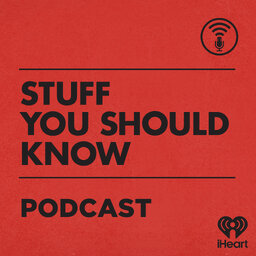How the Hyperloop Will Work
If you’re out there, Elon Musk, this one’s for you (although you already know everything in this episode). Everybody else, buckle in and sit back for a 700 mph thrill ride from LA to SF in 35 minutes - coming soon!
Learn more about your ad-choices at https://www.iheartpodcastnetwork.com
 Stuff You Should Know
Stuff You Should Know


